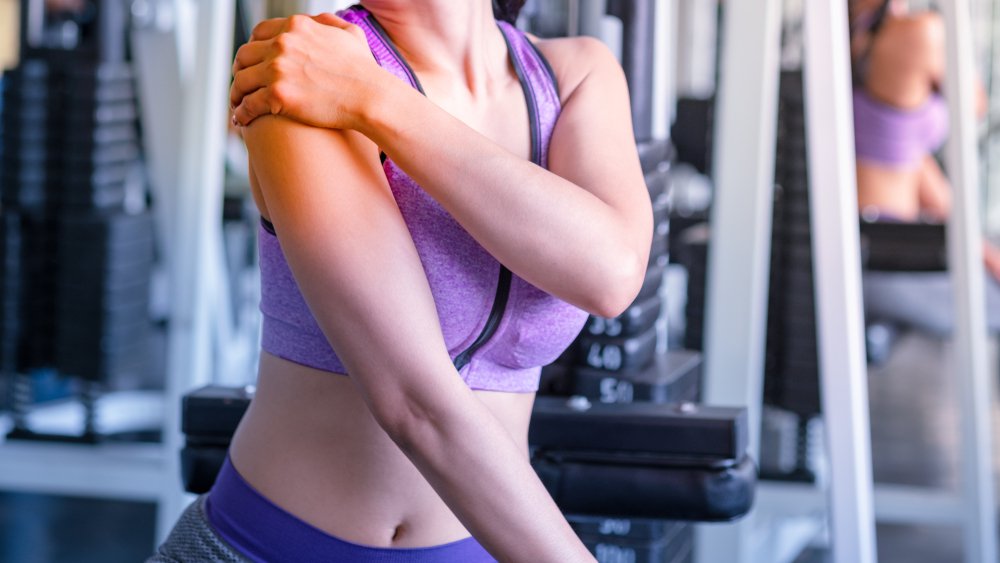 Rotator cuff injuries can be devastating to anyone who likes to play sports or workout. By understanding rotator cuff function and learning how to protect it, rotator cuff injuries may become a non-issue for you.
Rotator cuff injuries can be devastating to anyone who likes to play sports or workout. By understanding rotator cuff function and learning how to protect it, rotator cuff injuries may become a non-issue for you.
Your rotator cuff is composed of the tendons of 4 relatively small muscles in your shoulder: The supraspinatus, infraspinatus, teres minor, and subscapularis. The tendons grip the head of your arm bone (humerus) and dynamically hold it in the socket during shoulder movement. These muscles must work in sync to allow rotation of your shoulder in a symmetrical and congruent manor.
Dysfunction of the rotator cuff results in asymmetrical movement and instability that can damage not only the rotator cuff itself, but surrounding structures like the labrum (bumpers of the joint), the cartilage (lines the joint), and the biceps tendon (long head is in the joint). The instability causes “pinching” of the rotator cuff and inflammation of the bursa above it called “impingement syndrome”.
If you injure your rotator cuff, or believe that you have, it is very important to consult an orthopaedic surgeon like me. If the cuff tear is not one that needs surgery sooner than later, physical therapy may be all that is needed. Some partial tears may require consideration of a Platelet-Rich Plasma injection (PRP or ACP). Once you have been prescribed physical therapy and succeed in getting your pain
controlled and functional motion and strength back there are a few things you need to keep in mind:
- Do your rotator cuff strengthening. Your physical therapist should teach you rotator cuff specific exercises that you can do on your own. Although it is smart to warm up your shoulders before heavy lifting or overhead activities, it is important that you do not do your rotator cuff strengthening routine prior to that lifting. If you fatigue your cuff prior to heavy lifting the cuff may fail and injury could occur.
- Avoid the “terrible too’s”: too much, too soon, and too often. When you return to exercises like benching or Crossfit the tendency is for your ego to write checks your body can’t cash. This is why I often call flat benching the “ego press”. Many of the rotator cuff injuries I see from these workouts result from the terrible “too’s”. Leave your ego at the door and give yourself time to recover between workouts. Avoid excessive overhead movements like throwing and pressing in one workout.
- Build your foundation again. Start with stable closed-chain exercises with your arms below your head. Build your confidence with movements like a pushup while you critically analyze your form. Gradually bring back over-head movements concentrating on muscle contraction and controlling the movement. Use light dumbbells. Avoid ballistic movements. Work on balance, proprioception, and core control.
- Posture, Posture, Posture. It is critical that you pay attention to your posture with day-to-day activities. You should learn scapular stabilization techniques in physical therapy (Contact POWer PT to see Josh Lombardi or Jon Jianchristofo for your daily routine 412-357-1017). Avoid slouching and remain upright with the shoulders retracted when lifting or reaching. Do not burry your head in your phone.
- Change up your routine. One of the biggest problems I see in the gym with recreational weight lifters is that they focus too much on one movement like the bench press. It’s understandable because people at the bars don’t ask you, “How much you pec fly?” they ask, “How much you bench?” Avoid over emphasizing one movement. For instance, split your chest training between incline, decline, flys, and flat movements. Avoid doing military press and chest on the same day and do them a few days apart.
Protect your rotator cuff. It protects your shoulder. Happy cuff, Happy life.


